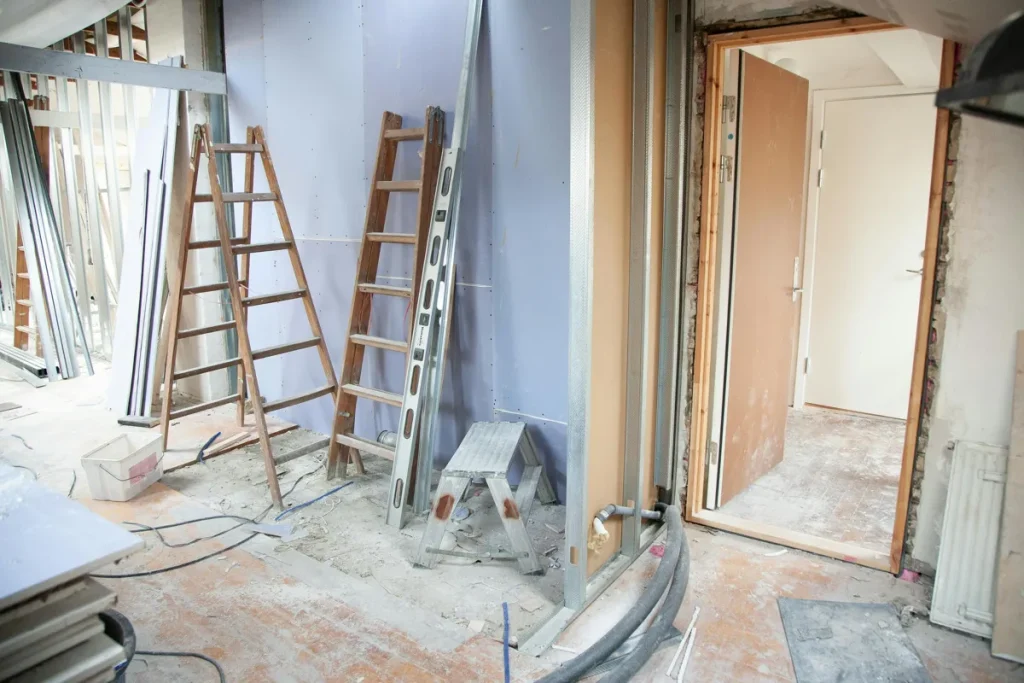
Many homeowners see their redesign as a flawless transition—old replaced with new, dysfunction swapped for convenience, and dullness traded for dynamic flair. But the truth usually tells another narrative. Not pleasure but remorse instead. Benevolent concealed obstacles behind pristine cabinets and new titles include expense overruns, lost time, and design decisions rapidly out of style. Some errors are more prevalent than others—and significantly more avoidable—such as misjudging timescales, ignoring necessary improvements, or following trends that are inappropriate for the area. Knowing what goes wrong is the best place to start, whether you are planning to demolish walls or call a professional.
Ignoring Long-Term Planning for Rapid Cosmetic Results
This often results in expensive do-over remodels that give visual attractiveness priority without matching the long-term use of the area. This usually results in selecting hardware finishes and paint colors before tackling layout inefficiencies or basic problems, resulting in temporary gratification. While you may change the counters and add new lighting, the result seems inadequate if the kitchen stays small or lacks enough storage. The aesthetic judgments should always be shaped by functionality, not by following rules. Ignoring long-term use also disturbs the flow and resale potential of the house. Over time, a space constructed without regard for natural lighting, ventilation, or accessibility becomes unworkable. Today, what is aesthetically pleasing might soon become obsolete or irrelevant.
Ignoring Regional Needs
Materials and construction methods change with moisture from coastal air, bright sunshine, and changing temperatures. Selecting flooring or wall finishes without considering these surroundings causes quicker wear, more upkeep, and even structural problems. Resilience has to be chosen for materials just as much as style does. For instance, over time, wood that warps under humidity or metal that corrodes with salt exposure affects durability. Beyond the temperature, home remodeling in San Diego reflects a broader expectation for outdoor integration and energy efficiency. The real estate market places a premium on patios, upgraded insulation, and solar-ready rooftops. Those who only pay attention to interior design overlook chances to increase value with these essentials. These are basics in this area, not luxury amenities. Projects that ignore the larger background of a city’s housing patterns or lifestyle needs often lag in both purpose and market attractiveness. A makeover sensitive to local demands offers comfort, economy, and long-term return on investment.
Selecting Contractors Without Proof of Their Capacity for Oversight
Many times, remodeling projects fail because one believes a licensed contractor ensures project success. A license, however, does not evaluate organizational ability or attention span. Strong supervision is essential for remodeling projects; daily progress must be managed, permit compliance must be ensured, subcontractors must be coordinated, and supplies must continue to flow. Timelines lengthen, quality deteriorates, and expenditures explode when monitoring is absent or inadequate. Contractors working on many projects may assign control to less experienced employees, which results in badly done projects and miscommunications. When no one is aggressively managing the moving components, delays from inspections, missing supplies, or misaligned installations become common. Verifying not just qualifications but also workload and communication style helps to reduce needless interruptions.
Designing Bathrooms and Kitchens Around Trends, Not Lifestyle
Although bathrooms and kitchens rule remodeling budgets and expectations, they are typically rebuilt via the prism of social media trends rather than actual daily usage. Though they draw attention, floating shelves, open vanities, and matte finishes seldom help to support a practical routine. If the necessary equipment is positioned incorrectly or storage is inadequate, a kitchen that looks perfect might be a headache during dinner preparation. Likewise, a bathroom without appropriate airflow or easily cleaned surfaces soon becomes difficult to maintain. While trends pass through, everyday routines never change. A kitchen makeover should center on cooking methods, space usage, and frequency of cleaning. The same is true with bathrooms; privacy, storage, and ease of movement must come above simple design.
Undervaluing the Cost of Scope Creep and Delay
Delays in remodeling not only throw off schedules but also influence decision-making, expenses, and daily operations. Timelines stretch out temporary dwelling quarters, labor costs rise, and supplier prices change as they expand. Every delay adds layers of expenses, particularly in reordering supplies or modifications, triggering fresh inspections. Still, many homeowners undervalue how one little delay sets off a series of events that double costs. Another financial killer is scope creep, in which little design modifications or additions compound during the refurbishment. It starts with just a changed backsplash or updated faucet, but every modification increases work hours and material coordination. Once reasonably priced projects expand wildly when limits are not tightly under control. Remodels go off course without rigorous adherence to an initial plan and flexibility for only necessary revisions.
Conclusion
Transformations define just as much as they contribute; they are about what is avoided as well. Research, planning, and precision-based remodeling seem more like a natural evolution than a project. Clear, conscious, and long-term value-oriented decisions usually outlive those motivated by emotion or trend. Let the strategy lead, then let the vision guide.
